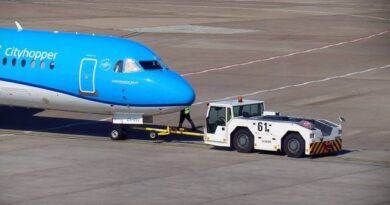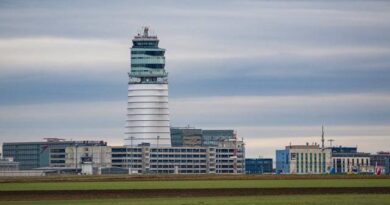Engineered Materials Arresting System (EMAS): Enhancing Runway Safety in Aviation
In the realm of aviation safety, the Engineered Materials Arresting System (EMAS) stands out as a critical innovation designed to prevent runway overruns. This system employs engineered materials to decelerate and stop aircraft that overrun the runway, thereby minimizing potential damage and enhancing passenger safety.
What is EMAS?
EMAS is a safety mechanism installed at the end of airport runways, consisting of a bed of engineered materials that can crush under the weight of an aircraft. This controlled deformation absorbs the aircraft’s kinetic energy, bringing it to a safe stop. The concept is akin to runaway truck ramps on highways, providing a fail-safe when traditional stopping methods are insufficient.

Why is EMAS Necessary?
Runway overruns can occur due to various factors, including mechanical failures, adverse weather conditions, or pilot error. In situations where the standard Runway Safety Area (RSA) cannot be extended due to geographical or infrastructural constraints, EMAS offers an effective alternative. By providing an additional safety buffer, EMAS mitigates the risks associated with aircraft overruns, especially in airports with limited space.
Design and Functionality
EMAS beds are composed of high-energy absorbing materials, such as lightweight, crushable concrete blocks or foamed silica. These materials are engineered to deform predictably under the weight of an aircraft, ensuring controlled deceleration. The design parameters, including the length and depth of the EMAS bed, are tailored based on factors like aircraft types, runway length, and available space.
Regulatory Standards and Implementation
The Federal Aviation Administration (FAA) has established guidelines for the design and installation of EMAS through Advisory Circular 150/5220-22B. These standards ensure that EMAS installations meet specific safety and performance criteria. Globally, aviation authorities recognize the efficacy of EMAS, and its adoption is expanding beyond the United States.
Real-World Applications and Effectiveness
Since its inception, EMAS has successfully stopped numerous aircraft overruns, preventing potential accidents. For instance, in 2016, a Boeing 737 carrying then-Vice Presidential candidate Mike Pence overran the runway at LaGuardia Airport but was safely stopped by the EMAS bed, with no injuries reported. Such incidents underscore the system’s effectiveness in real-world scenarios. – Source
Manufacturers and Global Adoption
Runway Safe is a leading manufacturer of EMAS products that comply with FAA standards. Their EMASMAX® and greenEMAS® systems are installed in various airports worldwide, adapting to diverse environmental and operational requirements. As of recent reports, EMAS installations are present in over 70 airports across multiple continents, reflecting its growing global acceptance.
Recommended Article: What is RESA (Runway End Safety Area)? ICAO Standards and Its Critical Importance
Conclusion
The Engineered Materials Arresting System represents a significant advancement in aviation safety, offering a reliable solution to mitigate the risks of runway overruns. By incorporating EMAS into airport infrastructure, aviation authorities enhance the safety of air travel, protecting passengers, crew, and aircraft alike.


